ISSN ONLINE(2320-9801) PRINT (2320-9798)
ISSN ONLINE(2320-9801) PRINT (2320-9798)
R.Karthick, S.Karal Marx
|
| Related article at Pubmed, Scholar Google |
Visit for more related articles at International Journal of Innovative Research in Computer and Communication Engineering
Image processing is a technique that statistically evaluate and visually enhance some aspects of an image that not gladly apparent in the original form. In previous paper uses the technique called Selective Biomedical images Identification. It uses the RGB value to identify the density of the image resolution. This process is difficult because if they have to uniformly distributed image content. So in this paper we introduce Markov chain algorithm for providing an efficient solution and security mechanism in the Biometrics especially in traffic and accident management.
Keywords |
| Image processing; Visual saliency; Marco chain; Human Eye tracking. |
INTRODUCTION |
| An image is one type of array or a matrix of square pixels i.e., picture elements that’s arranged in the rows and columns. Each pixel is a value from 0 (black) to 255 (white). The possible range of the pixel values are depends on the color depth of the image. The advent of complicated computers, digital image processing technology has gained to increasing importance in every field. The main objective of digital image processing technique is to statistically evaluate and visually enhance some aspects of an image that not gladly apparent in the original form. |
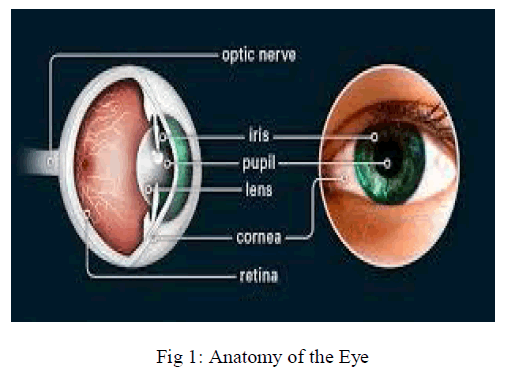 |
| Digital image processing systems forms into two principal application areas [1]. They are improvement of pictorial information of human interpretation and processing of image data for transmission, storage and representation for autonomous machine perception. Image processing is the applications in innumerable number of fields, such as medicinal, industrial, military etc [2]. In this paper we mainly focused on the eye. The Fig: 1 shows the anatomy of the eye. This paper presents a real-time approach for detection of driver’s fatigue i.e., weariness or weakness. |
| A. Operations Involved In Image Processing: |
| Image processing operations generally divided into four major categories. |
| Image Acquisition – Acquiring images through professional grade frame grabbers to USB-based webcams. |
| Image Compression – Used to reduce the amount of memory needed to store a digital image. |
| Image Enhancement and Restoration – Image defects due to digitization process or by faults in the imaging can be corrected. E.g.: bad lighting. |
| Image Feature Extraction – Obtaining useful information from the compressed images. |
RELATED WORK |
| In science communication, there are the two main color spaces called RGB and CMYK [3]. The existing system called Selective biomedical images uses the RGB models. The RGB color model relate very closely to the way we recognize the primary color red-r, green-g and blue-b receptors in our retinas. RGB uses the chemical addition color mixing and this is the basic color model used in television or any other medium that projects color with the light. This is basic color model used in computers and for web graphics, but not used for print production. |
| The secondary colors of RGB is yellow, magenta and cyan are formed by mixing two of the primary colors (i.e., Red, Green or Blue) and not including the third color. Red and Green combine to make yellow, blue and red form magenta and green and blue to make cyan. The combination of these three primary colors (red, green, and blue) makes pure white. In Photoshop using the “screen” mode for the different layers in an image will make the intensities mix together according to the additive color mixing model. |
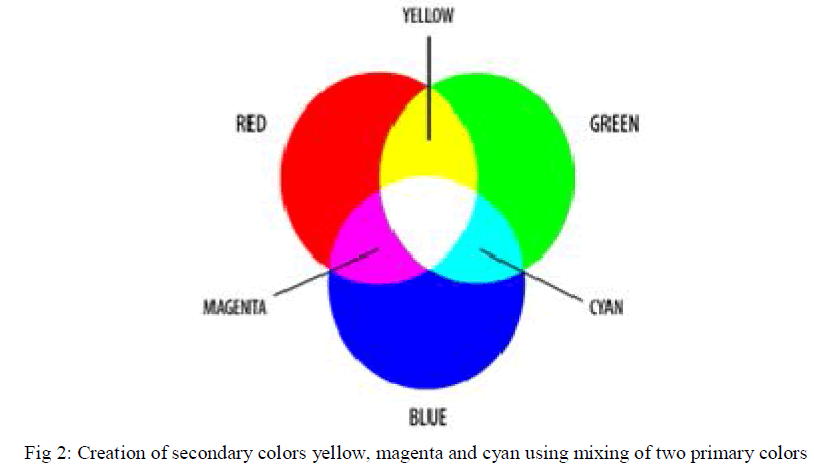 |
| Selective biomedical images are used to identifying or recognizing one object at a time in a complex scene. All available models are tested in the different datasets (videos or natural images) using different evaluation scores (comparison to human eye tracking). The processes of direct comparison of models are very difficult. And collecting the dataset with not uses the center bias. This process is difficult because if they have to uniformly distributed image content. |
PROPOSED SYSTEM |
| We proposed a Visual saliency model for managing the drawbacks of existing system. Saliency maps are a successful and biologically plausible technique for modeling visual attention. Fig: 3 show the two images and their corresponding bottom-up saliency maps, which indicate interesting features in an image. Values with high salience are red and low are blue. Saliency maps can be used in object recognition by using them as interest point operators. |
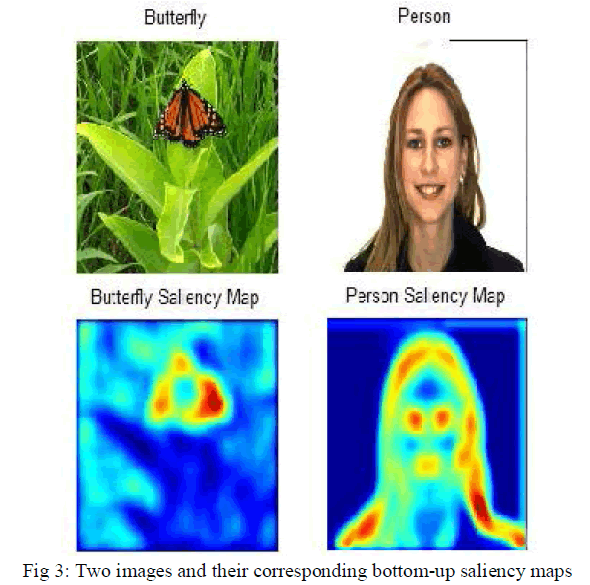 |
| The Visual saliency model uses the Markov chain algorithm. The Markov chain algorithm is providing an efficient solution and security mechanism in the Biometrics especially in traffic and accident management. Actively we are move our eyes to direct highest resolution of visual processing towards attractive things over 170,000 times per day and/or about 3 saccades per second [4]. Some of the most excellent models for predicting the human eye movements while viewing natural scenes use this approach only [5] [6]. |
A. Traffic and Accident Management: |
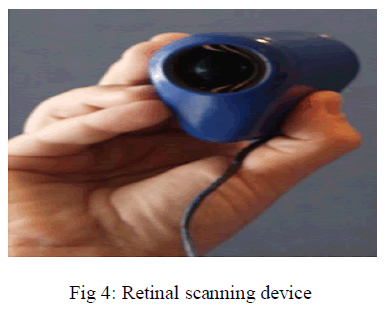 |
| This scanning device is work as follows. The three phases involved in order to achieve this device are the following: |
| (i) Localization of the face, |
| (ii) Tracking of eyes in each frame, |
| (iii) Detection of fatigue of tracking. |
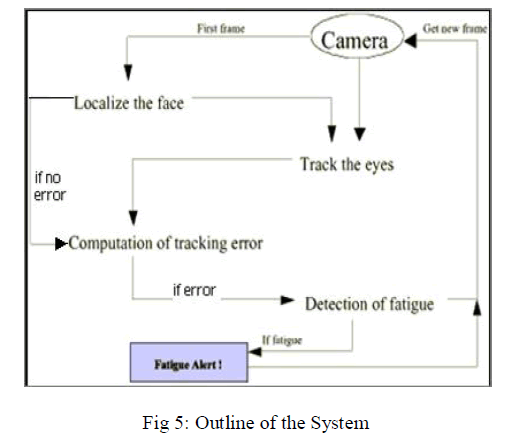 |
| This Retinal scanning device is placed in front of the driver. This device can find out the face of the driver using visual saliency and track the eyes. Its check the driver activity and record a 3-D video then creates the frames from that 3-D video. That the driver is falling asleep means the device can create a warning signal and also provide a vibration in the seat for the driver. The vibration of the seat is done with the help of the stepper motor to wake the driver from his drowsiness. |
CONCLUSION |
| Image processing achieves highly reliable and accurate detection of drowsiness. Image processing also offers a noninvasive approach to detecting the drowsiness without using of annoyance and interference. Further the system provides 3-D video from action of driver then provides awakening alarm and the accident prevention. |
References |
|